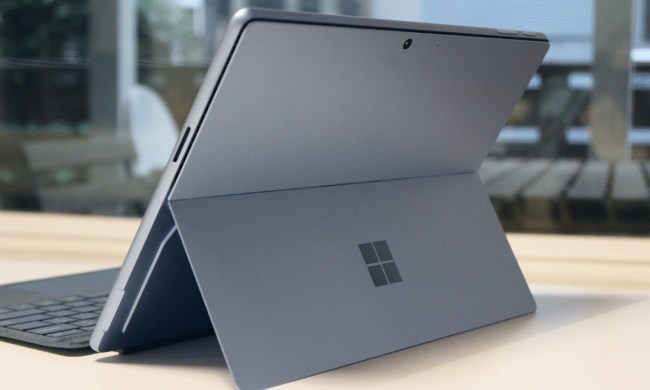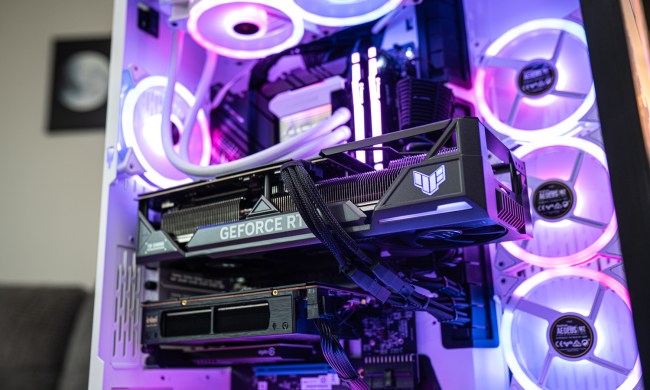
Gaming laptops used to all look the same. For the most part, they were thick, loud, and ugly.
Not so today. There’s a huge range of diversity in gaming laptops, which range from elegant portables to bombastic heavyweights. Considering the complexities of balancing performance, portability, and good looks makes it a hard enough decision to start with. Throw in the fact that, increasingly, people are also using their gaming laptop for work and school — and you have a seriously difficult decision to make.
Consider this a comprehensive guide to help you carefully evaluate the most important aspects of your next gaming laptop so you can zero in on the best possible option for you.
Types of gaming laptops
When exploring gaming laptops, it’s probably wise to start with your own budget. Prices for gaming laptops can range from $700 or $800to up above $3,000 — so knowing what you’re looking for is very important. Here are the general categories you’ll be shopping to help you get a lay of the land.
Budget

Budget gaming laptops offer a compelling balance between performance and affordability, making them an attractive option for budget-conscious gamers. Despite their lower price point, these laptops can still deliver respectable gaming experiences without breaking the bank. You can expect to find older, midrange dedicated graphics cards such as the Nvidia GTX 1650/1660 or the RTX 3050 in these machines. However, prices for gaming laptops often fluctuate, and we’ve seen some great options that offer the latest RTX 4050 and (in some cases) the RTX 4060 available for under $1,000.
These laptops are usually equipped with previous-gen processors from Intel or AMD. If you are planning to go with Intel, we recommend opting for 12th-gen or above. For AMD, stick to the Ryzen 6000 or above, although in some cases, the Ryzen 5000 series isn’t all that shabby.
In the budget price segment, we recommend the Dell G15, which is a promising option selling for under $800. The base model is available with Intel’s 13th-gen Core i5 CPU and an Nvidia RTX 3050 GPU, but you can configure it with up to an i7 and an RTX 4060. It does come with some compromises like a plastic design, along with a basic 1080p 120Hz refresh rate panel.
There’s also the Lenovo LOQ 15-inch gaming laptop, which offers incredible value. This one comes with an AMD Ryzen 5 7640HS CPU, an Nvidia RTX 3050 with up to 64GB of DDR5 memory, and a 2TB SSD, all for just $980. Other series of laptops that traditionally fit in this category include Asus’ TUF Gaming, MSI’s Cyborg, and Acer’s Nitro laptops.
Midrange

Stepping up to the midrange price bracket of $1,000 to $2,000 unlocks a wider range of options with enhanced performance and features. You can expect more powerful GPUs like the Nvidia RTX 4060 or RTX 4070 that deliver smoother gameplay and better graphics fidelity for demanding titles. These laptops often boast high-refresh-rate displays, advanced cooling systems, customizable RGB lighting, and robust build quality, catering to gamers who prioritize performance and aesthetics.
Our top pick would be the Lenovo Legion Pro 5 which is a powerful gaming notebook powered by an AMD Ryzen 7 7745HX processor and an RTX 4070 laptop GPU. In our testing, we found the laptop can easily attain 60 frames per second (fps) in even the most demanding games at its native resolution of 2560 x 1600.
If you are looking for something more sleek, then the Asus ROG Zephyrus G16 is a pleasantly surprising laptop. It is noticeably lighter than most 16-inch gaming laptops and comes with a bright and vivid QHD+ (2560 x 1600) display. The company has also used a special liquid metal thermal compound to ensure improved cooling, and you can get the laptop with up to an Intel Core i9-13900H processor and an Nvidia RTX 4060 GPU. The redesigned Alienware M16 R2 also fits into this category.
Premium
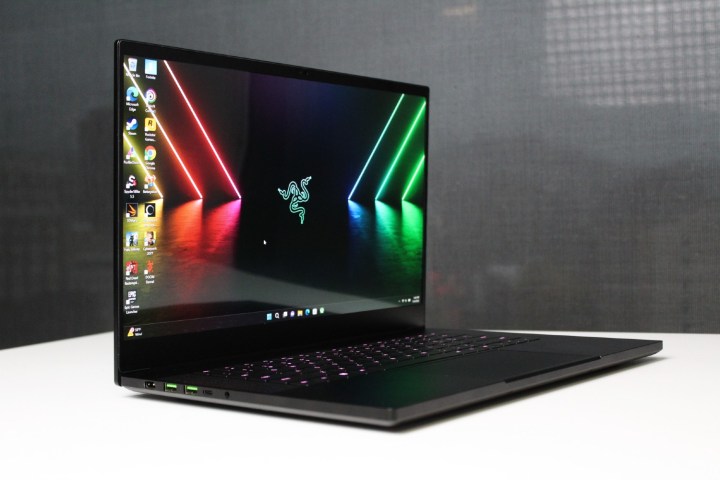
Gaming laptops priced beyond the $2000 price category typically offer top-of-the-line specifications and premium features tailored for high-performance gaming and other demanding tasks. These laptops often feature the latest-generation processors from Intel or AMD, along with powerful graphics cards such as the Nvidia RTX 4090, ensuring smooth gameplay even in the most graphically intensive titles. They also come equipped with ample RAM and fast SSD storage to minimize load times and provide a responsive gaming experience.
If money means nothing and you want bleeding-edge performance, then you need to invest in the MSI Titan 18 HX. This gaming notebook is packed to the brim, and features the Intel Core i9-14900HX, the most powerful mobile processor from Intel, paired with up to an Nvidia RTX 4090. It also comes with a brilliant 18-inch 4K Mini LED display with a 120Hz refresh rate. And if you’re looking for something faster, there is the option of a QHD+ (2560 x 1600), 240Hz IPS panel. There’s plenty of RGB lighting all around, support for three high-speed M.2 PCIe SSDs, tons of ports, and even a mechanical keyboard.
For those who care about aesthetics, there are options like the new Razer Blade 16, and even the Alienware x16, both of which offer distinct styling paired with high-performance hardware.
Compact or ultraportable
The past few years have seen gaming laptops shrink in terms of size and thickness. The 14-inch gaming laptop category is fairly new, but has several options from various brands including Alienware, MSI, Razer, and Lenovo. However, the most popular one has been the Asus ROG Zephyrus G14, which is hands down the best compact gaming laptop.
Asus also has some other unique portable gaming laptops like the ROG Flow X13, which is a 2-in-1 ultraportable, and the Flow Z13, which is basically a beefed-up Surface Pro. Both of these machines also can hook up with a special external GPU solution called the ROG XG Mobile, which gives a huge boost to graphics performance.
In summary, before making a purchase, it’s crucial to determine your primary intended use and select a category that best suits your needs.
What should you look for?
Performance

When buying a gaming laptop, one of the most critical decisions you’ll make is selecting the right graphics processing unit (GPU). While some games rely heavily on the CPU, the majority are still GPU-bound. Currently, Nvidia GeForce RTX GPUs dominate the gaming laptop market, offering a range of options from the latest RTX 40-series cards like the RTX 4050 to the high-end RTX 4090. On the AMD side, options include the Radeon RX 7000M and 7000S series, with differences mainly in power limits.
Entry-level gaming laptops typically feature GPUs like the Nvidia GeForce RTX 4050 or older AMD Radeon models, offering decent performance for most games at middling settings. Moving up to mainstream gaming, options like the RTX 4060 or 4070 provide higher performance for gaming on high settings, though prices may vary due to market fluctuations. For VR gaming and handling the highest settings, top-tier GPUs such as the RTX 4070, 4080, or 4090 offer unparalleled performance, allowing for smooth gameplay, advanced effects, and even 4K gaming. However, such laptops may come at a premium cost, starting around $2,000 and potentially exceeding $3,000 depending on additional specifications.
Beyond the GPU, other essential specs to consider include the CPU, RAM, and storage. A powerful CPU, such as an Intel Core i7 or overclockable Core i9, complements the GPU’s performance, though many games prioritize GPU over CPU. RAM, preferably 16GB for gaming, enhances system performance, with options ranging from 8GB on entry-level laptops to 16GB or higher on midrange and high-end models. It is best to have at least 16GB of memory for an optimum experience, especially if you wish to play modern gaming titles. Storage options vary from single SSDs to configurations combining SSDs for boot drives and a secondary HDD or SSD for bulk storage.
Display
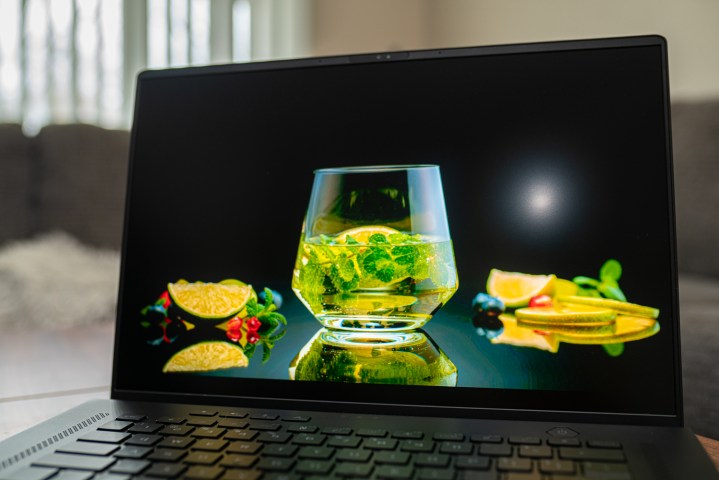
When selecting a gaming laptop, the display is a critical consideration that’s often overlooked by buyers. Modern screen sizes are typically 14 or 16 inches, with some larger systems featuring 18-inch panels and older budget systems offering 15-inch or 17-inch sizes. Resolution should never fall below 1920 x 1080, although 4K (3840 x 2160) and increasingly popular 1440p options are available, with the latter striking a balance between detail and performance. The 16:10 aspect ratio has become increasingly more common, though, meaning the resolutions to look for are 1200p or 1600p.
Refresh rate is also incredibly important for smoother gameplay, with many laptops offering 144Hz, while higher-end models boast 165Hz, 240Hz, or even 360Hz or 480Hz options for enhanced fluidity.
A really solid middle ground for gaming laptops right now is a 1600p resolution with a 240Hz refresh rate. It’s a perfect match for the performance available at the moment, and allows for both high-fidelity resolution and superfast frame rates, depending on the game.
For gamers seeking optimal visual performance, Nvidia G-Sync and AMD FreeSync technologies synchronize the display with the graphics card to eliminate screen tearing and ghosting. Touchscreens are generally unnecessary for gaming laptops, as they drain battery life and create unwelcome glossiness. If you care about immersion, OLED displays offer deeper blacks and vibrant colors, although they do bring concerns around burn-in. Alternatively, mini-LED screens provide excellent color reproduction without the risk of burn-in, offering gamers another compelling option to consider.
Build quality and form factor
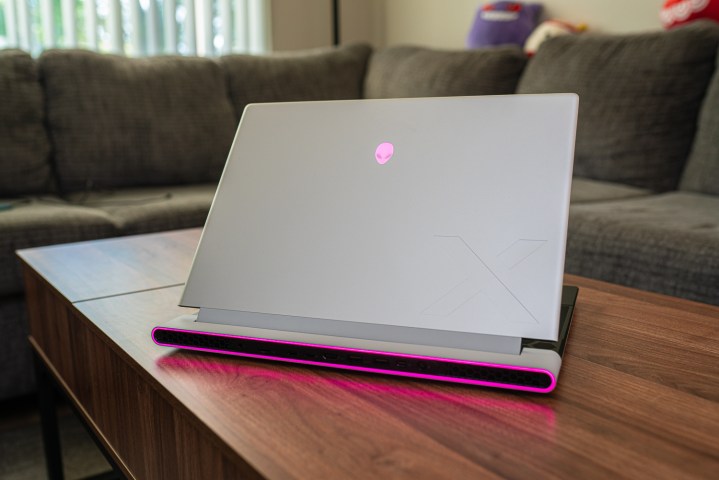
When buying a gaming laptop, prioritize build quality to ensure durability and reliability, and look for a form factor that meets your portability needs and gaming preferences. By carefully assessing these factors, you can choose a gaming laptop that offers an optimal balance of performance, portability, and aesthetics for an enjoyable gaming experience.
It is advisable to look for laptops made from high-quality materials like aluminum or magnesium alloy, which offer both strength and lightweight properties. A robust chassis is essential for protecting internal components and withstanding the rigors of frequent gaming sessions.
Also consider the cooling system of the laptop. Efficient cooling mechanisms, such as advanced heat pipes and multiple fans, are vital for maintaining optimal performance and preventing overheating during intensive gaming sessions. Adequate ventilation and airflow design help dissipate heat effectively, prolonging the life apan of the laptop’s internal components.
Another aspect to evaluate is the keyboard quality. A comfortable and responsive keyboard can significantly enhance the gaming experience, especially for extended gaming sessions. Look for laptops with customizable RGB lighting and anti-ghosting technology for improved gaming performance and aesthetics.
When it comes to form factor, consider your portability needs and gaming preferences. Thin and lightweight gaming laptops are ideal for gamers who prioritize portability and mobility, making them suitable for gaming on the go or local are network (LAN) parties. On the other hand, desktop replacement laptops offer superior performance and larger displays, but may sacrifice portability due to their bulkier design.
Battery life
While battery life is a crucial aspect for most laptops, the same doesn’t hold for gaming laptops. Geared toward maximizing performance with high-end processors and graphics cards, gaming laptops prioritize power over energy efficiency. Consequently, they typically require to be plugged in at all times to sustain peak performance, particularly during gaming sessions.
Nevertheless, some gaming laptop models across different brands do feature sizable batteries, with capacities reaching up to 99.9 watt-hours, the maximum size allowed on airplanes. It’s also worth highlighting that AMD-powered laptops tend to offer superior battery life due to enhanced efficiency compared to their Intel counterparts.
It should also be noted that some of the smaller 14-inch models have decent battery life, such as the Razer Blade 14 or ROG Zephyrus G14.
Upgradability
Considering future upgradability when buying a gaming laptop is essential for maximizing longevity and adaptability. By opting for a laptop with upgradeable components such as RAM and storage drives, users can extend the life span of their device and keep it relevant as gaming needs evolve. This approach allows gamers to adapt to changing requirements, whether that’s transitioning to more demanding titles or accommodating evolving preferences, without the need to invest in a completely new system. Future upgradability offers a cost-effective solution, enabling users to spread out the cost of upgrades over time and allocate their budget more efficiently.
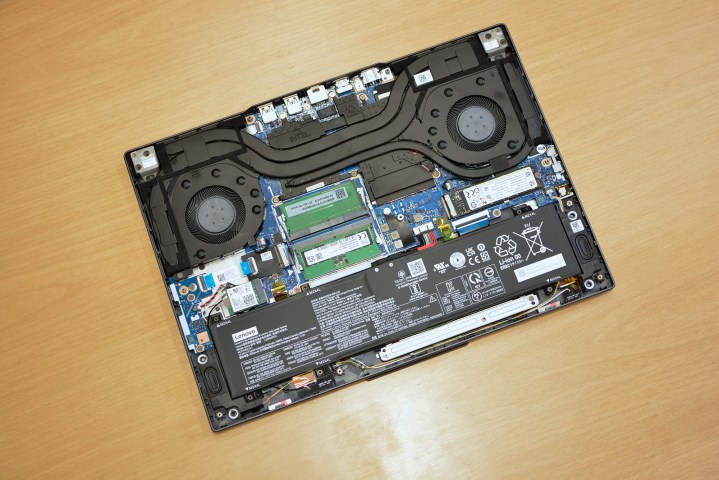
Having a gaming laptop with upgradeable components empowers users with the flexibility to perform DIY customizations and upgrades. It also ensures future-proofing by anticipating advancements in technology and gaming demands, thereby safeguarding the investment and enabling users to enjoy gaming experiences for years to come. Overall, prioritizing future upgradability enhances the gaming laptop’s value proposition, providing users with longevity, adaptability, and cost-effectiveness in their gaming endeavors.
What brands to consider?
When it comes to gaming laptops, several brands stand out for their commitment to delivering high-performance machines tailored specifically for gaming enthusiasts. Here are some of the best gaming laptop brands, known for their quality, innovation, and gaming-centric features.
Asus ROG

Asus offers a wide range of gaming laptops catering to various needs and preferences. From value-focused models like the Asus ROG Strix G17 to portable flagships like the Zephyrus M16, Asus provides options for every gamer. The company pays particular attention to display quality, with its ROG Nebula HDR standard delivering excellent HDR, high refresh rates up to 240Hz, and a 16:10 aspect ratio, setting a high standard for gaming laptop displays.
In addition to traditional gaming laptops, Asus offers unique options like the ROG Ally and ROG Flow Z13, which prioritize portability over raw power. These devices can be paired with the XG Mobile external GPU for a significant performance boost. Among Asus’ lineup, the ROG Zephyrus G14 stands out as a highly portable 14-inch gaming laptop with impressive performance. While it comes with various GPU options, the RTX 4070 is recommended for its balance of power and portability. Shopping sales for the Zephyrus G14 is advisable, as it often sees significant discounts, making it an excellent value proposition. Alternatively, for those seeking maximum power, the Asus ROG Strix Scar 18 offers top-of-the-line specs, including an RTX 4090 GPU and Intel’s 24-core Core i9-14900HX CPU, albeit at a higher price point.
Alienware
Alienware, a subsidiary of Dell, offers laptops that maintain a consistent level of excellence, contrasting with the hit-or-miss reputation of its desktops. This reputation stems from its pricing strategy, which offers various configurations to suit different budgets while maintaining top-notch build quality. Alienware’s laptops are divided into two main ranges: the thin and light X-series and the powerful M-series.
The X-series stands out for its thin and sleek design. It’s constructed with an aluminum shell similar to premium brands like Razer. Despite starting at $1,400, these laptops offer exceptional build quality comparable to competitors. On the other hand, the M-series prioritizes raw power over thinness, catering to users who demand high-performance gaming experiences. With configurations featuring up to an RTX 4090, these laptops are ideal for desktop replacement.

Among Alienware’s lineup, the Alienware x16 emerges as the top choice, as it combines the thinness of the X-series with flagship hardware. With options for up to a 14-core Intel CPU and an RTX 4090, the x16 delivers exceptional performance in a portable form factor. Alternatively, the Alienware x14 R2 offers similar thinness, but sacrifices some performance, making it a more compact, yet capable gaming laptop.
Lenovo
Lenovo’s Legion gaming laptops are renowned for their superior performance that often exceeds expectations compared to laptops with similar components. This could be attributed to various factors such as power management tweaks, improved thermal design, or what Lenovo refers to as “AI graphical wizardry.” Despite their impressive performance, Lenovo Legion laptops are reasonably priced, with options like the Pro line focusing on performance and the Slim line on portability, with both starting at around $1,000.
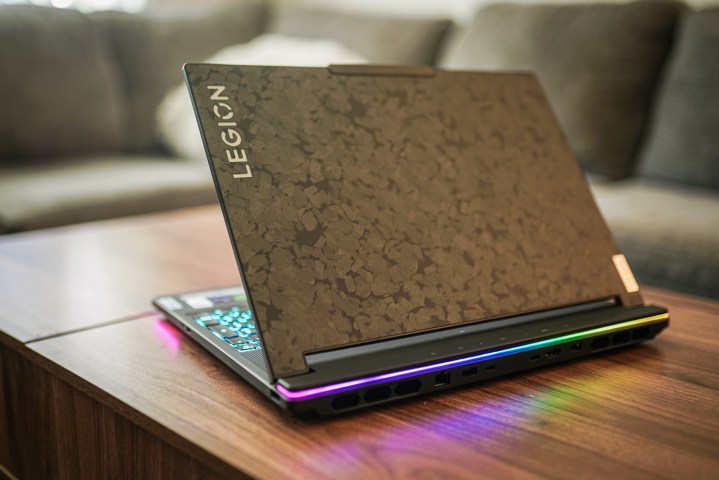
The company offers a wide range of Legion laptops, including the high-end RTX 4090-packed Legion 9i, known for its exceptional power and efficiency, as well as a liquid-cooled thermal system. However, it comes with a hefty price tag of $3,000 or more. On the other end, the new LOQ line starts at $700 and features lower-end components like the RTX 3050.
The Legion Pro 5 stands out as a top recommendation, offering a powerful and reasonably priced gaming experience and a speedy 165Hz display. The RTX 4070 configuration, priced between $1,300 and $1,500, provides impressive performance, hitting 60 fps in demanding games like Red Dead Redemption 2 and nearing 100 fps in titles like Horizon Zero Dawn. While the Legion Pro 5 is suitable for most gamers, the Legion 9i remains the best high-end option for those seeking top-tier performance, albeit at a higher cost.
Razer
Razer is renowned for producing top-tier gaming laptops that recall the MacBook’s quality and craftsmanship. Due to their premium build and features, Razer laptops come with a hefty price tag, starting at $2,000. The aluminum frame ensures durability while maintaining a slim profile compared to bulkier plastic counterparts.
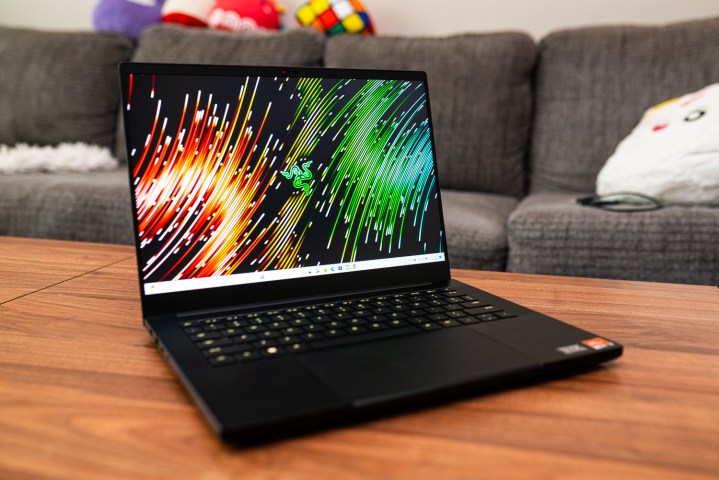
Razer Blades boast exceptional gaming keyboards, expansive trackpads, and high-quality displays suitable for gaming and content creation. Although Razer laptops may not fit every budget, they offer a premium gaming experience that’s unmatched by competitors.
Among Razer’s limited lineup, the Razer Blade 14 stands out as a highly recommended choice for most users. It combines portability with powerful hardware like the AMD Ryzen 9 7940HS and Nvidia RTX 4070. It also excels at maintaining cool temperatures under heavy loads and boasts impressive battery life, making it a practical and high-performance option.
MSI
MSI’s gaming laptop range typically came with a bold design with prominent black and red accents. However, that has changed over the years and the company has made a genuine effort to improve the aesthetics. Of course, the iconic dragon logo is still around, which might not be as appealing. On the other hand, MSI’s Dragon Center software is pretty functional and lets users monitor system performance, switch between multiple performance profiles, adjust fan speeds, and customize keyboard backlighting to suit their preferences.

The new Titan 18 HX from MSI is a true gaming desktop replacement featuring top-of-the-line features. With pricing starting over $5000, this beast can be configured with the latest Intel Core i9-14900HX CPU, an RTX 4090 GPU, and up to 128GB of DDR5 memory!
If you care for something more portable, then there is the newly updated Stealth series available in 14-inch, 16-inch, and 18-inch sizes, all of which are powered by Intel’s new Ultra Core series processors and Nvidia RTX 40-series mobile GPUs.


